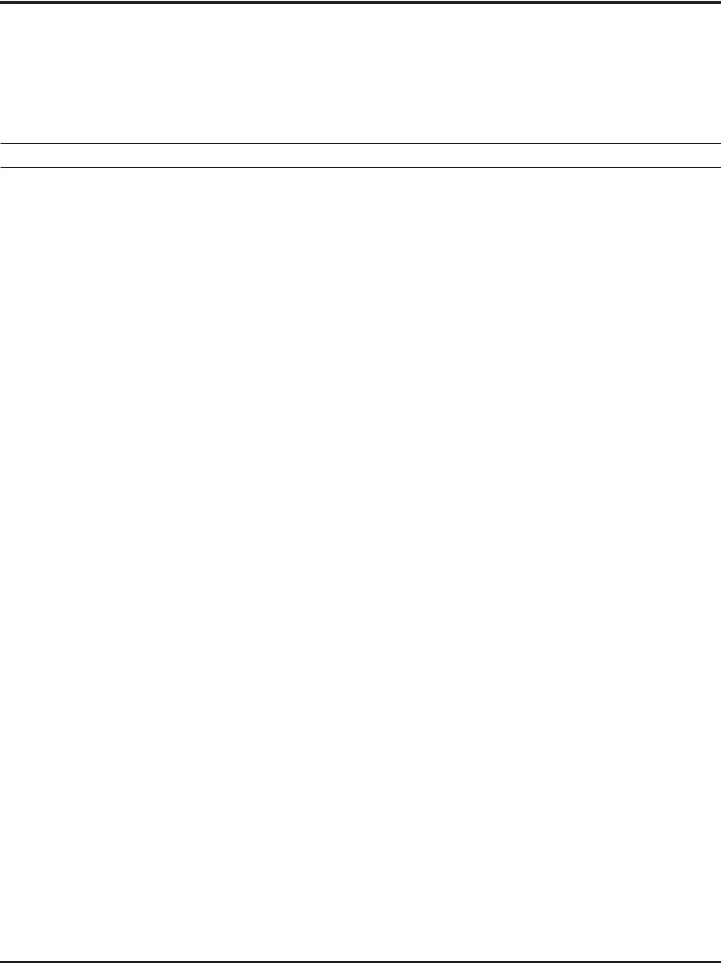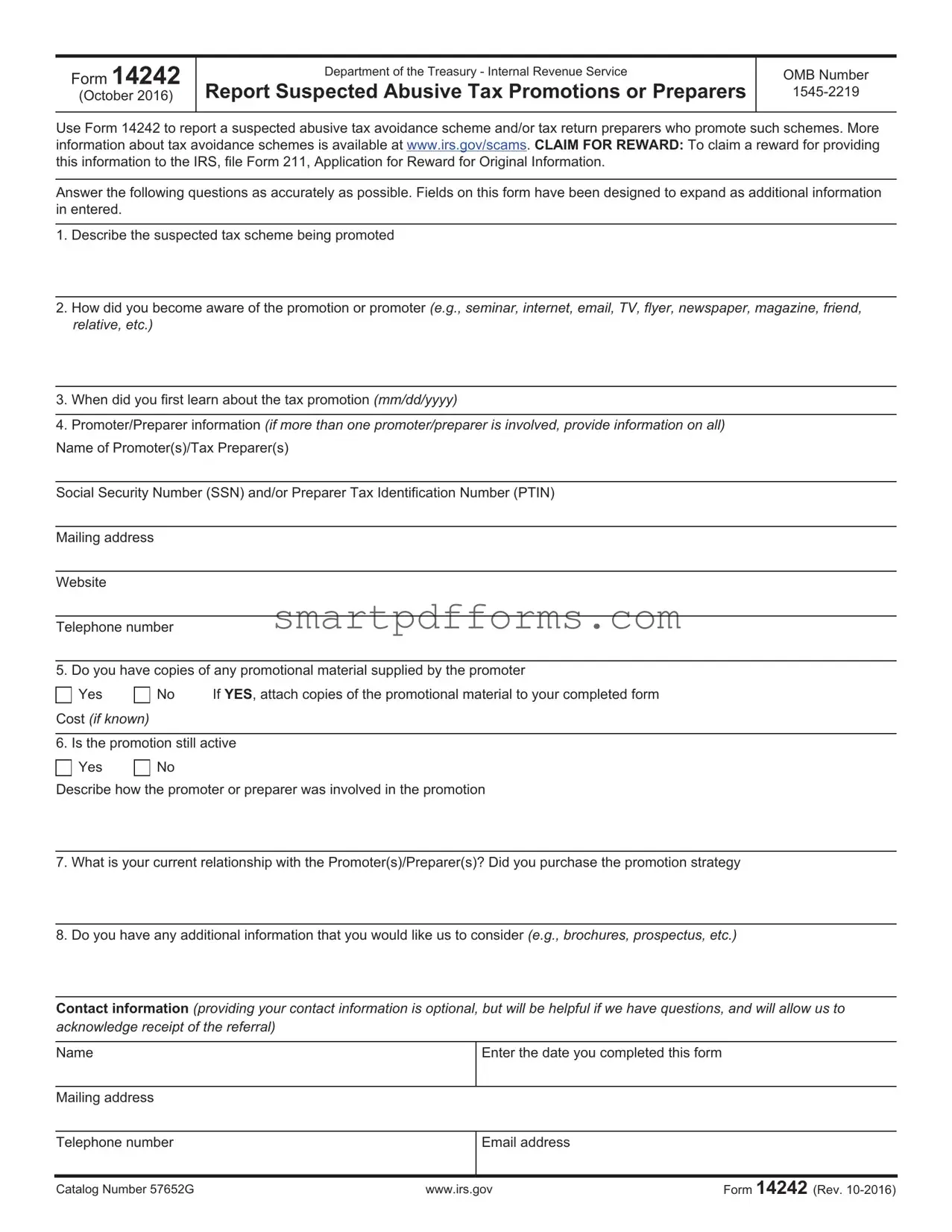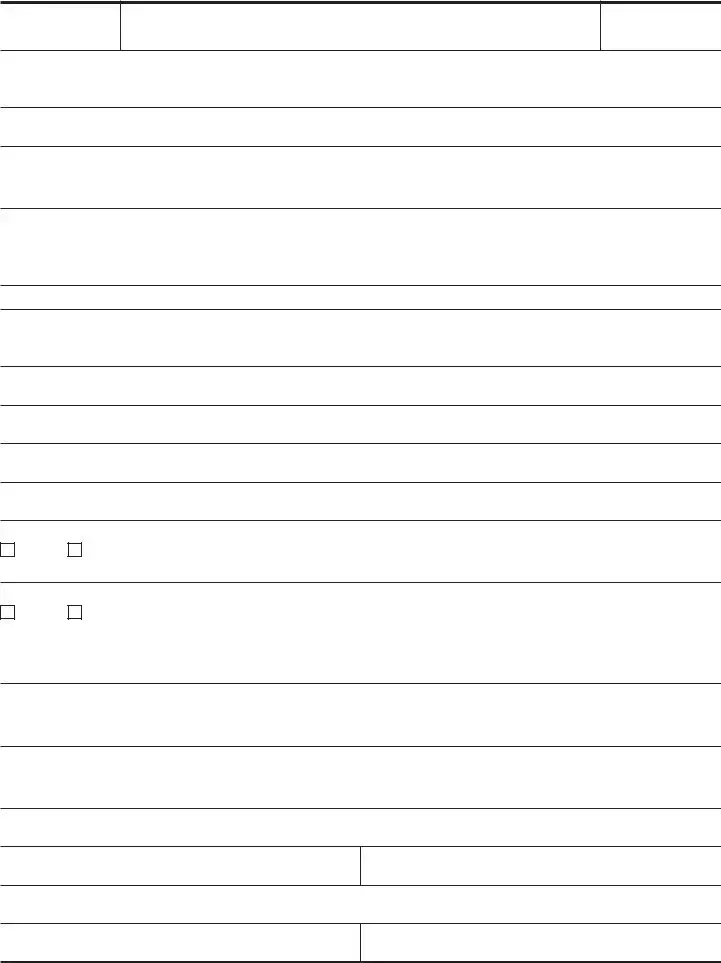Form 14242
(October 2016)
Department of the Treasury - Internal Revenue Service
Report Suspected Abusive Tax Promotions or Preparers
Use Form 14242 to report a suspected abusive tax avoidance scheme and/or tax return preparers who promote such schemes. More information about tax avoidance schemes is available at www.irs.gov/scams. CLAIM FOR REWARD: To claim a reward for providing this information to the IRS, file Form 211, Application for Reward for Original Information.
Answer the following questions as accurately as possible. Fields on this form have been designed to expand as additional information in entered.
1.Describe the suspected tax scheme being promoted
2.How did you become aware of the promotion or promoter (e.g., seminar, internet, email, TV, flyer, newspaper, magazine, friend, relative, etc.)
3.When did you first learn about the tax promotion (mm/dd/yyyy)
4.Promoter/Preparer information (if more than one promoter/preparer is involved, provide information on all)
Name of Promoter(s)/Tax Preparer(s)
Social Security Number (SSN) and/or Preparer Tax Identification Number (PTIN)
Mailing address
Website
Telephone number
5. Do you have copies of any promotional material supplied by the promoter
No |
If YES, attach copies of the promotional material to your completed form |
6. Is the promotion still active
Describe how the promoter or preparer was involved in the promotion
7.What is your current relationship with the Promoter(s)/Preparer(s)? Did you purchase the promotion strategy
8.Do you have any additional information that you would like us to consider (e.g., brochures, prospectus, etc.)
Contact information (providing your contact information is optional, but will be helpful if we have questions, and will allow us to acknowledge receipt of the referral)
Enter the date you completed this form
Catalog Number 57652G |
www.irs.gov |
Form 14242 (Rev. 10-2016) |

Page 2 of 2
FAX your completed form to: (877) 477-9135 OR,
Mail the completed form to:
Internal Revenue Service
Lead Development Center Stop MS5040
24000 Avila Road
Laguna Niguel, CA 92677
(IRS Employees ONLY SHOULD e-mail to *LDC)
Privacy Act and Paperwork Reduction Act Notice
This information is solicited under authority of 5 U.S.C. 301, 26 U.S.C. 7801 and 26 U.S.C. 7803. The primary purpose of this form is to report violation of the Internal Revenue laws.
Routine uses of this information include giving it to the Department of Justice for civil and criminal litigation. We may also disclose this information to other countries under a tax treaty, to federal and state agencies to enforce federal non-tax criminal laws, or to federal law enforcement and intelligence agencies to combat terrorism.
Providing this information is voluntary. Not providing all or part of the information will not affect you. Providing false or fraudulent information may subject you to penalties.
You are not required to provide the information requested on a form that is subject to the Paperwork Reduction Act unless the form displays a valid OMB control number. Books or records relating to a form or its instructions must be retained as long as their contents may become material in the administration of any Internal Revenue law. Generally, tax returns and return information are confidential, as required by section 6103.
The time needed to complete and file this form will vary depending on individual circumstances. The estimated average time is: Preparing and sending the form to the IRS should involve 10 minutes. If you have comments concerning the accuracy of the time estimate or suggestions for making this form simpler, we would be happy to hear from you. You can write to the IRS at the address listed in the Instructions.
Catalog Number 57652G |
www.irs.gov |
Form 14242 (Rev. 10-2016) |


